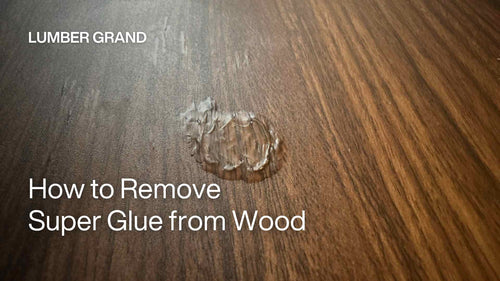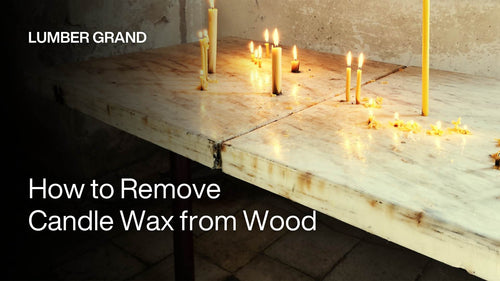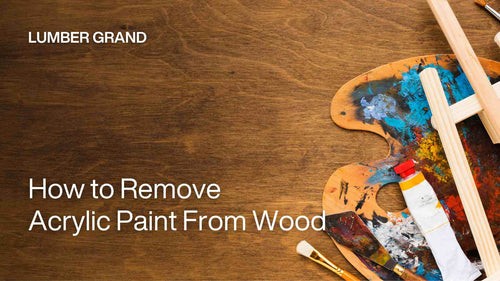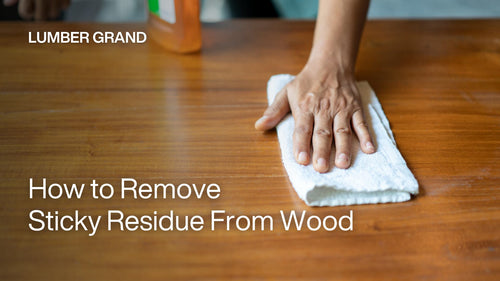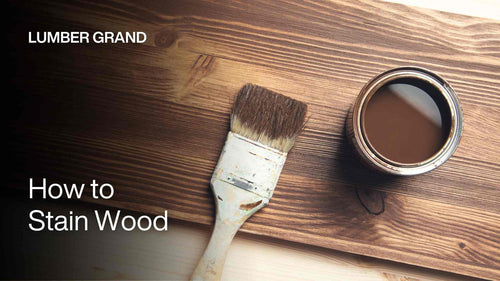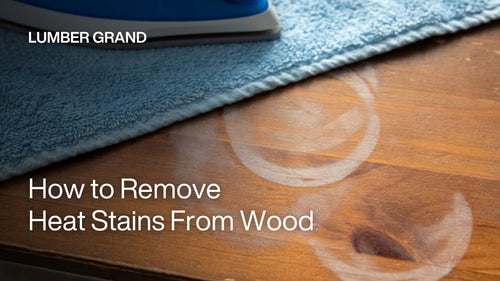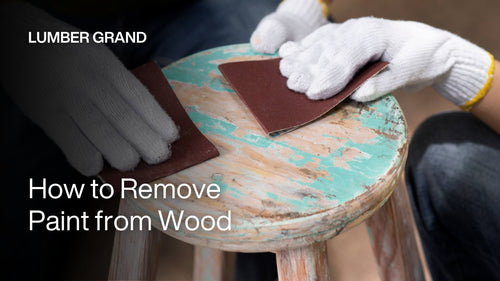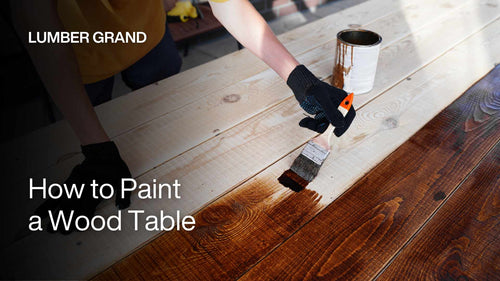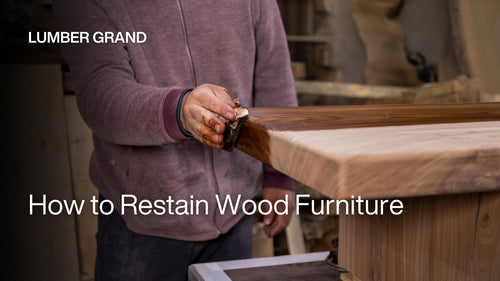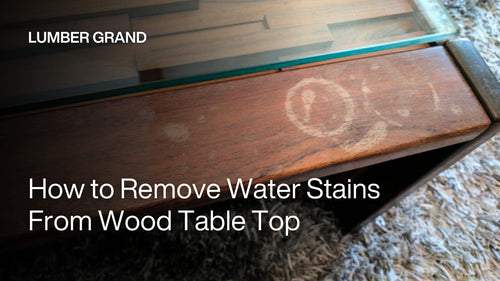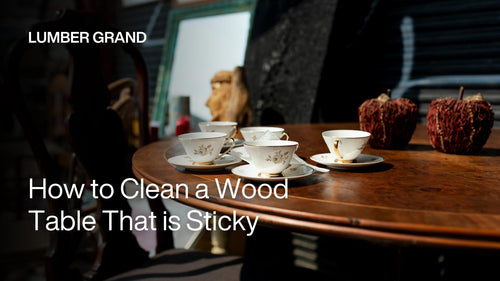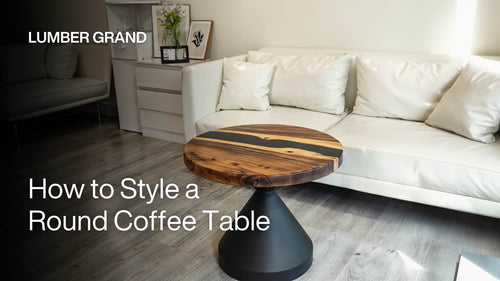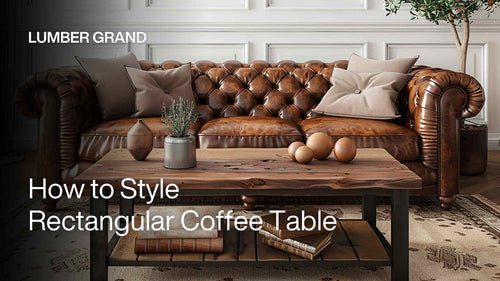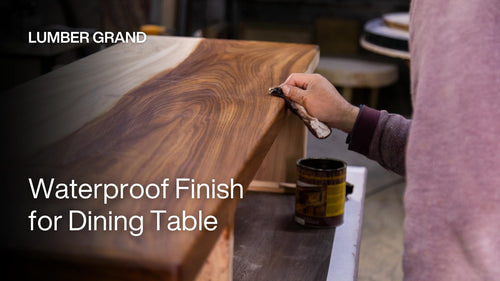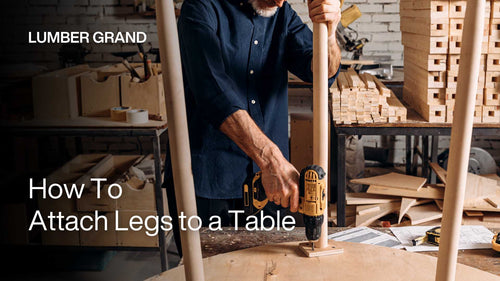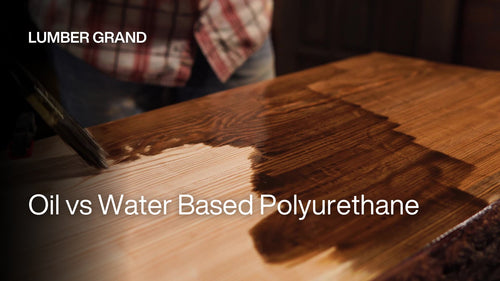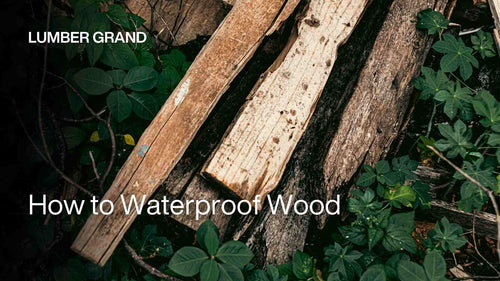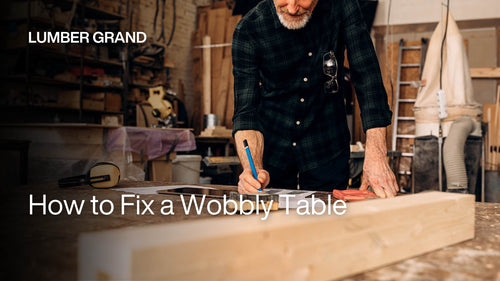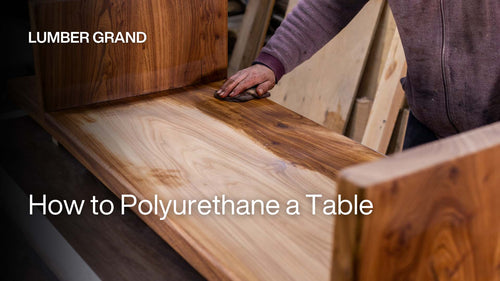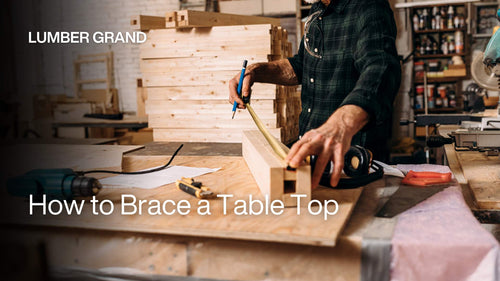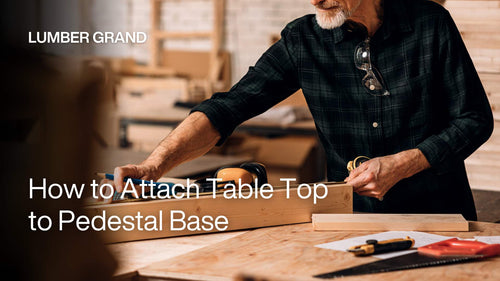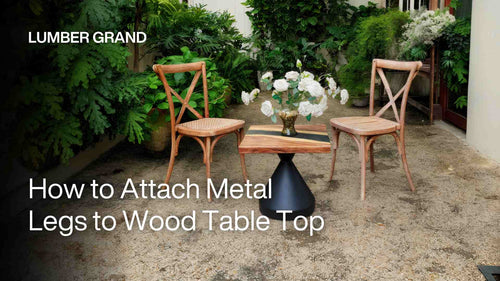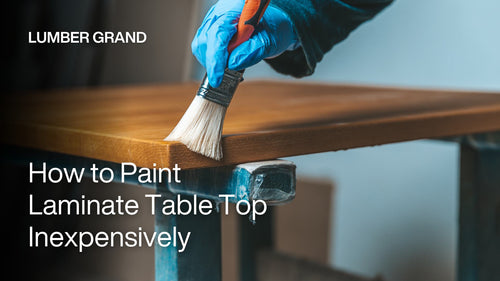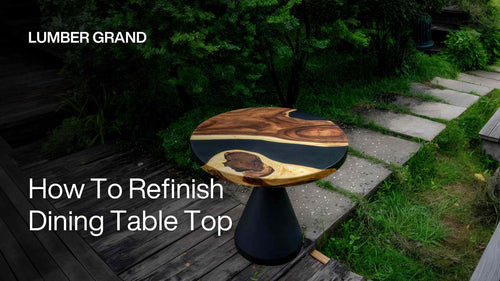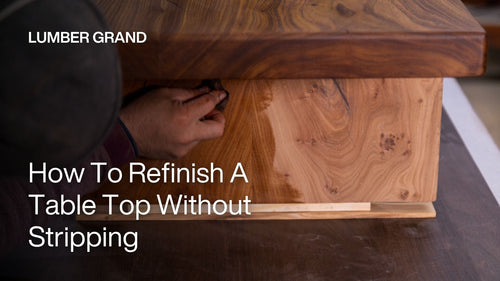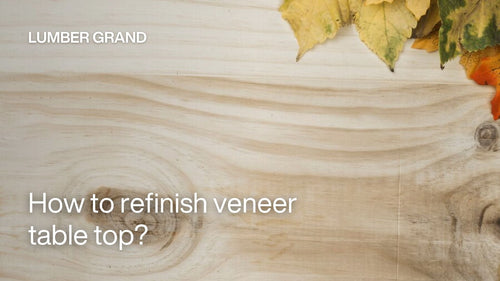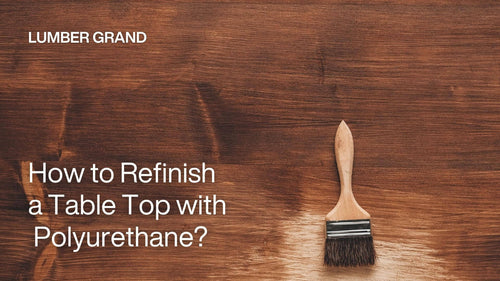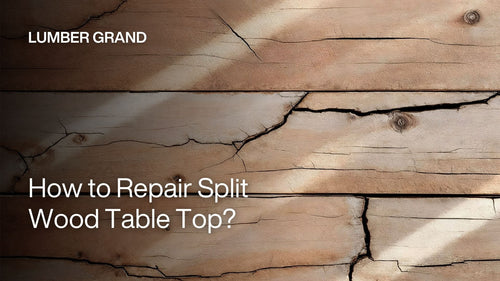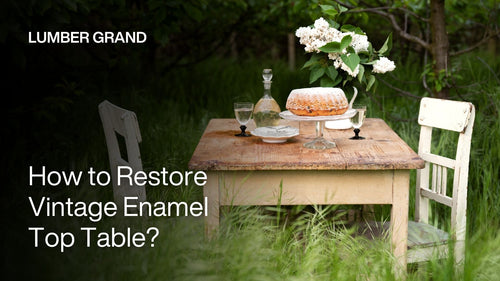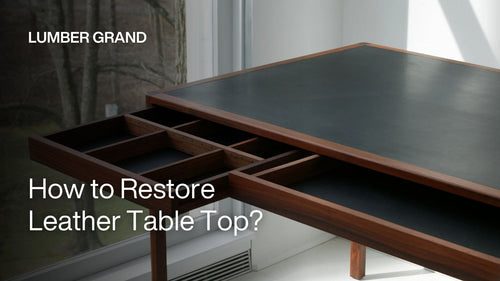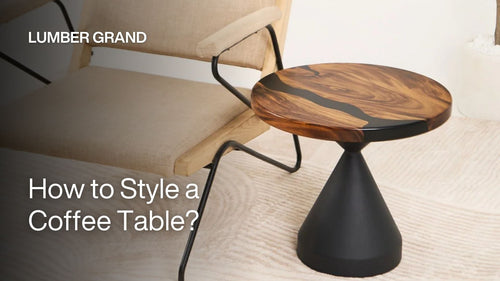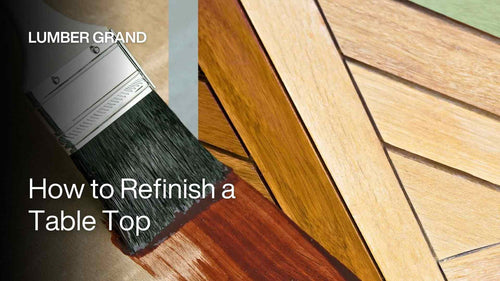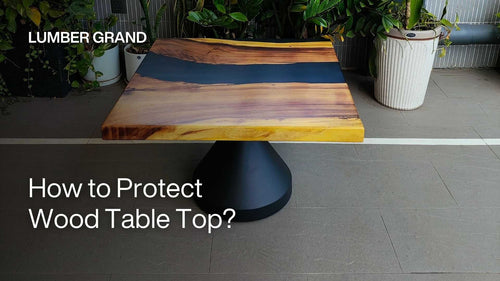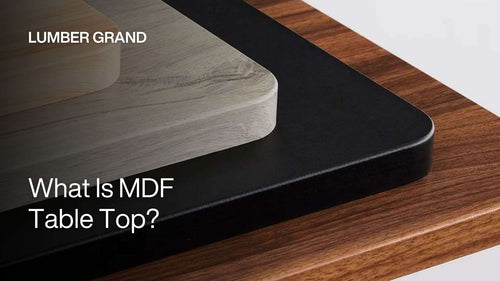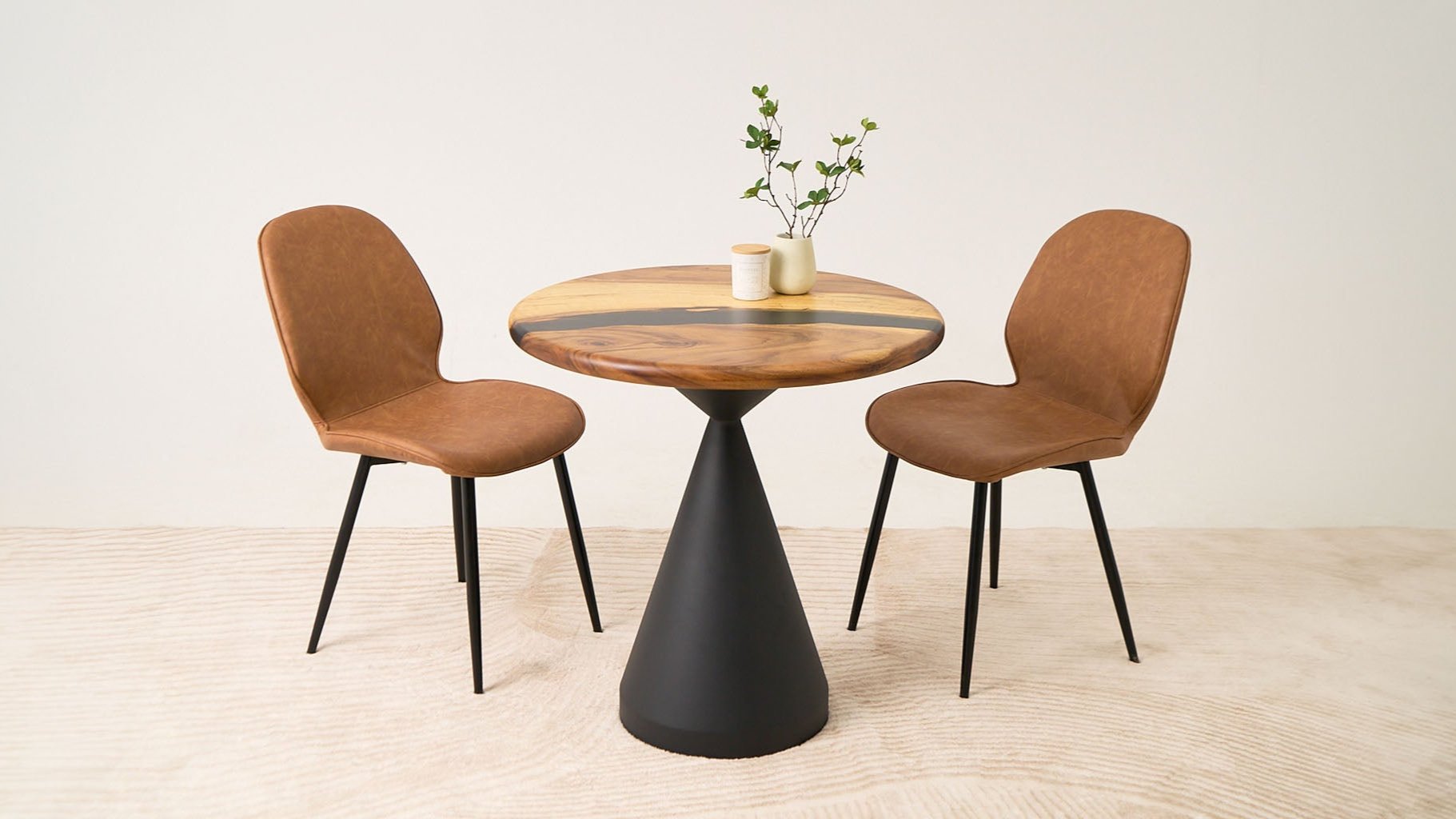How to seal a table top with epoxy starts with one simple goal: protecting and enhancing your surface by sealing it. Whether it’s a DIY table top project or a table refresh, a seal coat creates a smooth, durable base and is essential before any deep pour. This quick guide from Lumber Grand shows you the easy steps to achieve a clean, glossy epoxy finish on any table!
Why Is Sealing a Table with Epoxy Important?
Sealing is essential when learning how to epoxy a table top because natural materials like wood, stone, and concrete have tiny pores that trap air and moisture. If you pour epoxy without sealing first, that trapped air can cause bubbles, dents, or cloudy patches. A seal coat fills these pores and locks everything in, giving your table a smooth, stable base for your main epoxy pour.

The seal coat is the protective base for your epoxy project
Photo: ©Pavlo Tsunik on Canva.com
Step-by-Step Process for Sealing a Table Top with Epoxy
This is where the real work happens. You will want to put extra attention with this step-by-step process about how to seal a table top with epoxy because this will result in a flawless surface with a shiny, smooth finish and no air bubbles.
1. Preparing the Table Surface for Epoxy
The first step requires working on a completely dry surface that is free of any moisture. Begin your tabletop epoxy preparation by gently sanding epoxy table it with 220-grit sandpaper to clear away dirt and dust and old surface coatings. To eliminate all particles from the surface, you should clean it with either a soft lint essential cloth or tack material. Use isopropyl alcohol for complete surface cleaning when needed since both water and chemical cleaners should be avoided.
The room temperature must remain between 22-26°C (70-80°F). Begin by creating a dust-free area and placing plastic or drop cloths over the floor to capture falling epoxy particles. Secure the edges of the table with tape to avoid epoxy drips or runs during the seal coat application.

Sand paper and isopropyl alcohol is important in the preparation step
Photo: ©cottonbro studio; MB Lifestyle on Canva.com
2. Choosing the Right Epoxy for Sealing
For seal coating, you need a DIY table top epoxy, not a deep pour epoxy. Why? Table top epoxy is thicker and cures faster. This makes it perfect for brushing on thin coats that won’t run down the sides.
Deep pour epoxy is made for large volume pours and takes longer to cure, it’s too thin to grip surfaces well in a seal coat. Look for an epoxy with a simple 1:1 mixing ratio and a working time of at least 20-30 minutes so you’re not rushed during the application.
3. Applying the Seal Coat Properly
Now it’s time to mix and apply your epoxy.
How to mix epoxy for sealing:
-
Use a clean plastic container and stir sticks.
-
Measure equal parts of resin and hardener (e.g., 16 oz each for a 32 oz batch).
-
Mix slowly but thoroughly for 2–3 minutes, scraping the sides and bottom.
-
Avoid whipping or fast stirring, it can cause bubbles.
Applying the coat:
-
Use a new, soft-bristle brush (not foam) to apply the epoxy.
-
Start at one end and move across the table in straight strokes.
-
Don’t flood the surface. This coat should be thin and even, just enough to soak into the surface and fill the pores.
-
Make sure to get into corners, live edges, or any cracks.
If you're working with porous or rough wood (like walnut or cedar), consider applying a second seal coat after the first has cured for 4 hours.
 Applying the seal coat with brush for the best finish
Applying the seal coat with brush for the best finish
Photo: ©atlasstudio on Canva.com
4. Curing Time and Best Practices
After brushing on the seal coat, allow it to sit undisturbed for about 4-6 hours. During this time, the epoxy will become tacky, this is the best stage for bonding with your flood coat or main epoxy pour.
Tips to follow:
-
Don’t touch the surface while curing.
-
Keep it dust-free and away from cold drafts or high humidity.
-
Don’t pour your main epoxy layer if the seal coat has cured beyond 24 hours. If this happens, sand the surface gently and wipe it clean before moving forward.
-
If you’re applying another seal coat, wait 4 hours between coats.
Common Mistakes & How to Avoid Them
-
Skipping the seal coat: One of the biggest mistakes is skipping the seal coat. Though it may seem optional, it’s essential for preventing air bubbles, foggy patches, and uneven finishes. The seal coat fills tiny pores in the wood, creating a smooth surface for your main pour.
-
Using the wrong epoxy: Not only focusing on how to seal a table top with epoxy, choosing the right type of epoxy is very important. Deep pour epoxy is too thin for sealing and takes longer to cure. Stick with table top epoxy, it’s thick enough to stay in place and cures faster, giving you a better foundation for your next pour.
-
Mixing too much epoxy at once: Large batches may seem efficient but harden quickly. If epoxy sets before you apply it, it turns sticky or clumpy. Mix small batches so you can work smoothly before it starts to cure.
-
Rushing the application: Applying too fast or pressing too hard creates brush marks and bubbles. Use gentle, even strokes and let the epoxy self-level for a smooth seal coat.
-
Not following cure times: Curing time matters. If you pour your flood coat too soon after sealing, or wait too long, the bond between layers won’t be strong. The best time to pour your next layer is about 4 hours after the seal coat, when it’s tacky but not fully dry.
 Avoid common mistake to achieve the best result for your epoxy project
Avoid common mistake to achieve the best result for your epoxy project
Photo: ©Svetlana Evgrafova on Canva.com
Shop our full line of custom table top epoxy here.
How To Maintain an Epoxy-Sealed Table?
-
Clean regularly with a soft cloth and warm, soapy water.
-
Avoid hot items, use coasters or mats to protect the surface.
-
To avoid scratches, don’t drag heavy items across the table.
-
Wax every few months for added shine and surface protection.
Epoxy is tough, but a little care will keep it looking new for years. If you have any questions or want to explore more epoxy table tops, feel free to email us at contact@lumbergrand.com!
Now that you know how to seal a table top with epoxy the right way, you're one step closer to creating a beautiful, long-lasting piece. A good seal coat sets the stage for a smooth, bubble-free finish, so don’t rush it, take your time, and enjoy the process.







